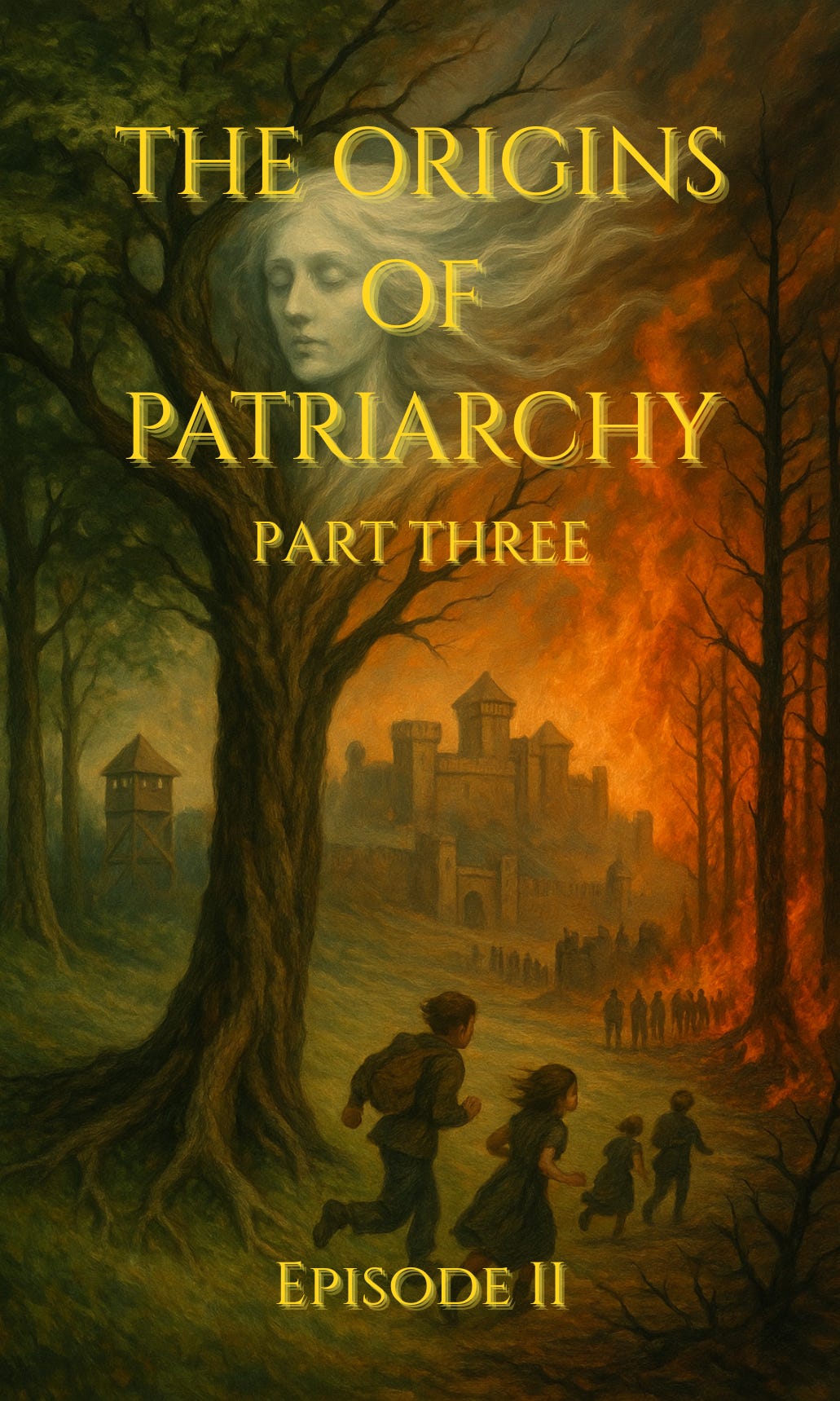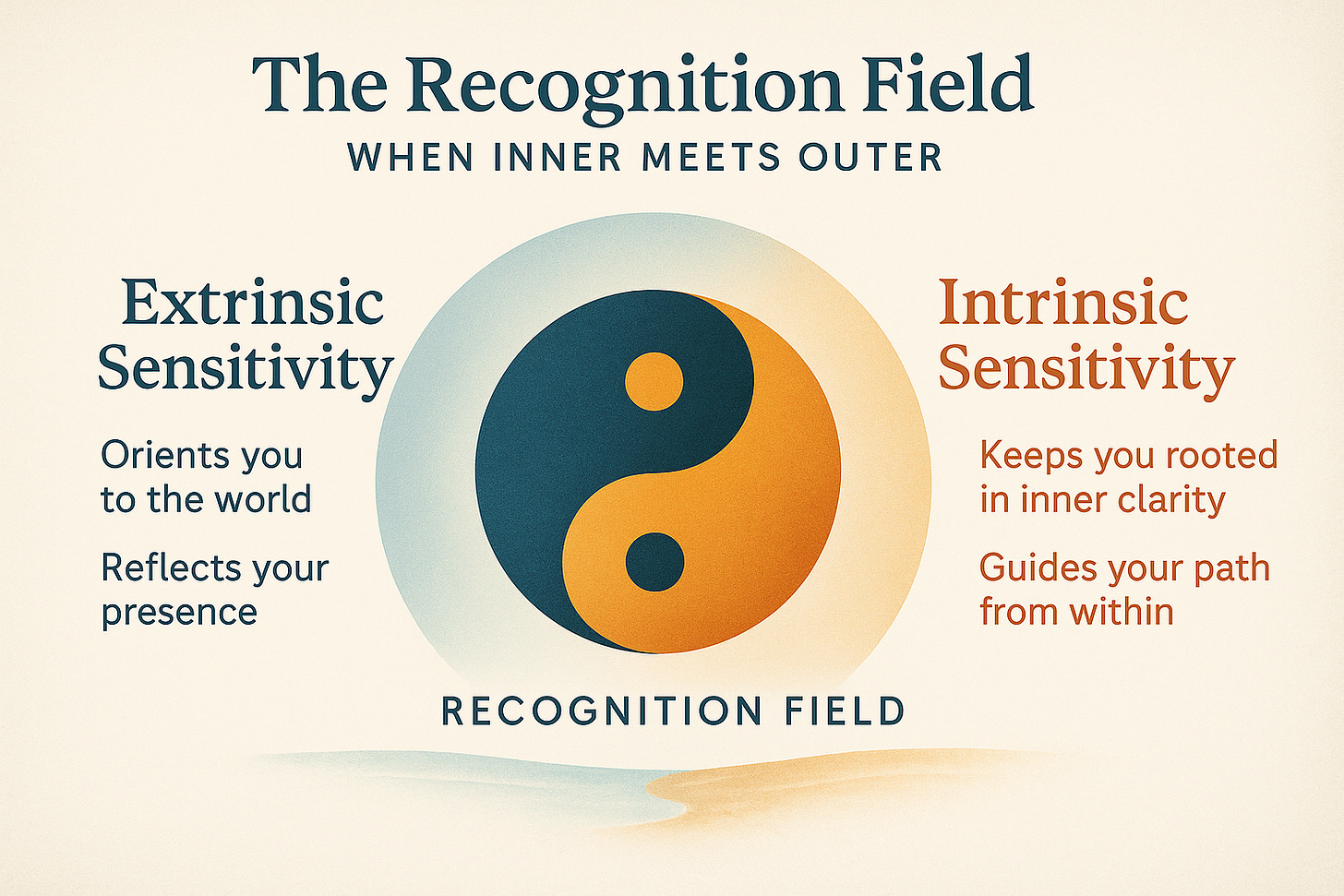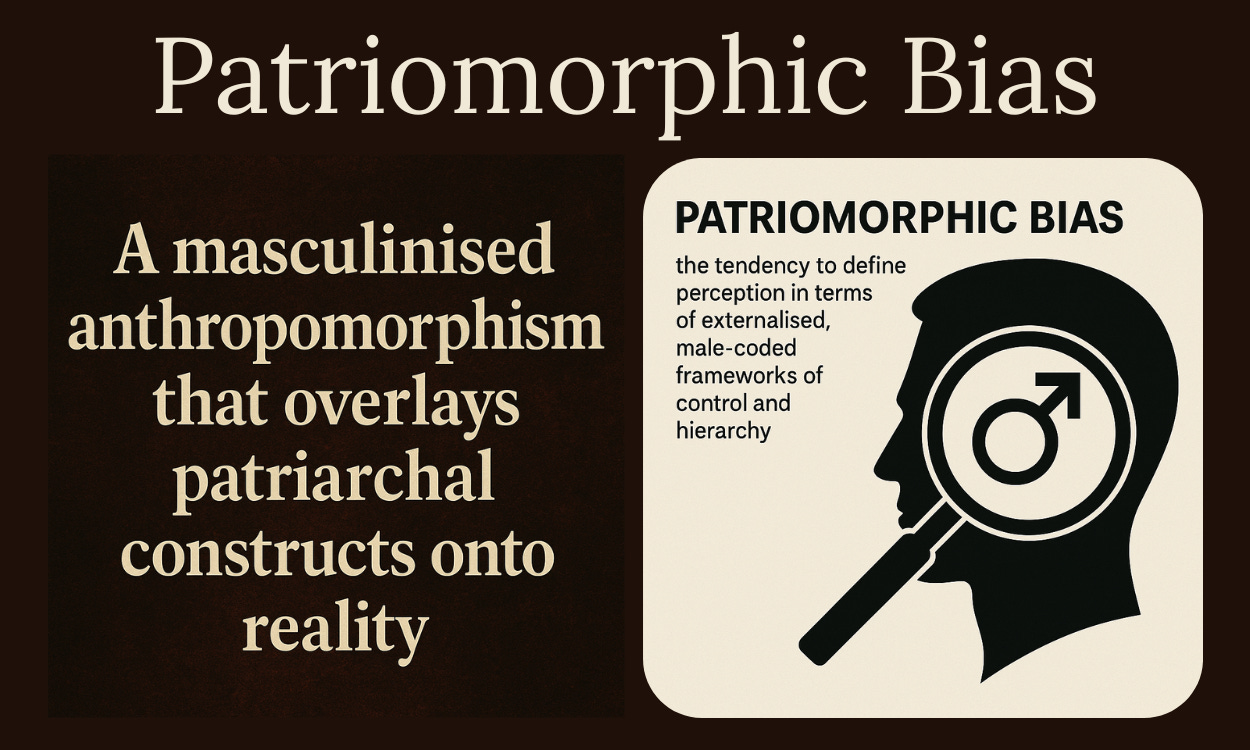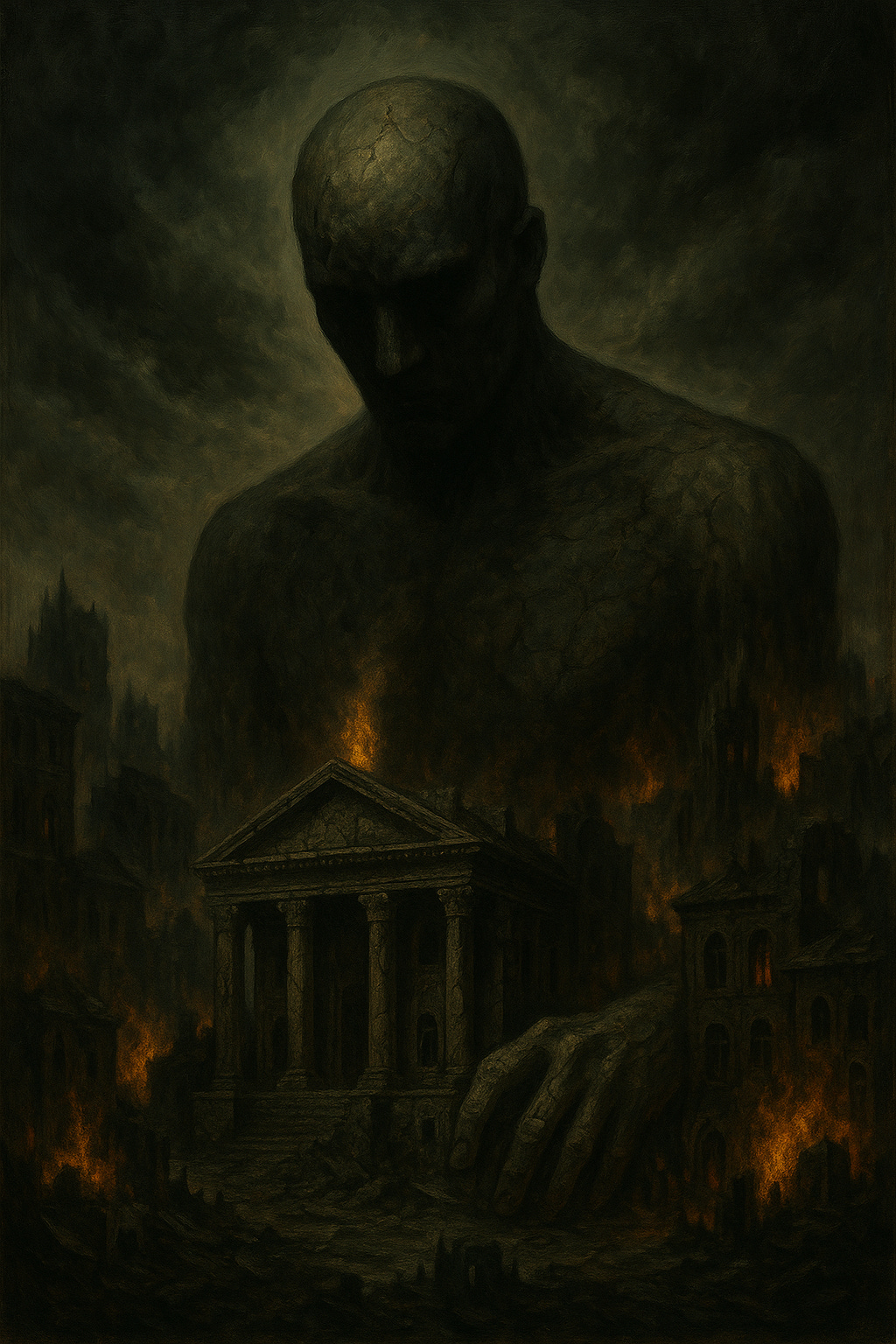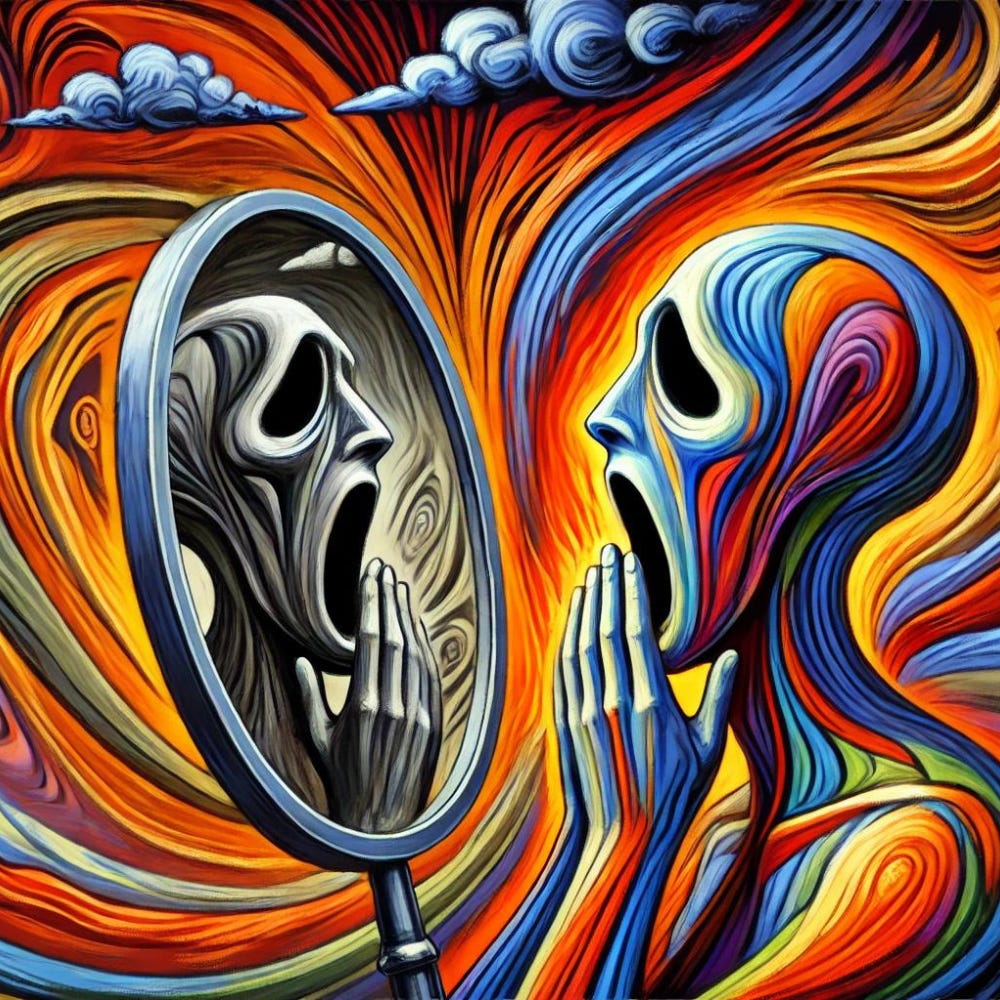Origins of Patriarchy Part Three
The Patriarchal Trauma Loop: How Crisis Psychology Got Us Trapped
🌊First Waves: When Survival Became Our God
UK Male Narration:
Something ancient cracked the path of human history—Splintering us into a darker world, setting the patriarchal recursion in motion. A rupture—searing, world-shifting—tore through the collective nervous system of our species. It changed our evolution.
And in that rupture, something was decided.
Not consciously. Not intentionally.
But recursively.
In crisis, we didn’t just adapt—we rewired the Recognition Field Matrix (RFM), the invisible scaffold of perception.
The patriarchy didn’t just construct new tools or modern civilisation—it rewired our minds and bodies. It narrowed the aperture of our evolution, collapsing what could’ve emerged into what merely survived. What began as emergency instinct… crystallised into culture and identity.
Control became safety.
Dominance became virtue.
Suppression became strength.
Disconnection became wisdom.
Emotion became a liability.
And fear?
Fear became the architect of civilisation. And we’ve been lost ever since.
This article follows our exploration of “How Trauma Became Our Foundation” in Episode I of Part Three.
🧵 Haven’t read Episode I yet?
👉 This lays the groundwork for everything to come—how trauma shaped human reality.
Origins of Patriarchy Part Three
🌊First Waves: Beneath the Concrete…How Trauma Became Our Foundation
Now, we trace the deeper pattern—how trauma became the architect of modern civilisation. The infrastructure of patriarchy.
💡 Core Claims
The masculine wasn’t elevated because it was superior.
It was recruited as a crisis strategy—a trauma override.
A temporary adaptation that calcified into human identity.
Patriarchy evolved through the recursive, self-fulfilling nature of Recognition Loops.
What if what we call “civilisation” isn’t progress but trauma looping through time?
What if the hierarchy, the heroism, the hardness...
Were just residues of rupture?
Shadows of trauma, camouflaged as glory?
What if our entire civilisation was built on the desperate brilliance of a species
trying to survive, while on its knees?
🧠 What You’re About to Discover
This episode follows the psychological arc of our species. It unravels how catastrophe reshaped the human mind.
⚡A rupture triggered emergency traits
🔁 Those traits looped until they crystallised into identity
🏛️ Identity hardened into culture
🪞Culture became the container of our perception
Trauma rewrote the rules of reality. It restructured what we could perceive, what we rewarded, and what we believed was true. The rupture created an imbalance in our sensitivities, sending humanity into a tailspin.
♂️Extrinsic Sensitivity (ES): Outward pattern detector—the masculine-coded thread.
♀️Intrinsic Sensitivity (IS): Inner pattern recogniser—the feminine-coded thread.
These two systems are meant to work in balance, forming the foundation of human perception. But trauma broke that balance.
ES was amplified. IS was suppressed.
And the world we live in today is the result of that distortion.
🔍 The Real Question
What happens when you spend 12,000 years perfecting crisis mode?
What happens when an entire species forgets what balance feels like?
What happens when our inner awareness—our personal power—is suppressed, distorted and rebranded as weakness, buried beneath swords and shields?
What happens when a whole civilisation is shaped, not by who we are, but by what we were reduced to when broken?
That’s our human tragedy.
Recognition Loops will show you how to find your way back.
What if civilisation isn’t our most outstanding achievement… but symptomatic of our most entrenched trauma loops?
This article proposes a radical hypothesis: that patriarchy was neither natural, inevitable, nor designed. It was inherited, as Recognition Loops, ancient memories coded into us by a global cataclysm.
What if the so-called ‘masculine’ traits of control, conquest, and disconnection are trauma-adapted survival strategies, not human destiny?
What if our social systems, governments, economic models—even our perception of love—are stitched together from fear responses passed down through millennia?
This is not a blame game. It is an invitation to remember, reframe, and reweave your reality!
🌍 Why This Matters Now
We’re standing at the edge of another collapse:
AI systems mirroring distorted logics
Climate destabilisation is accelerating faster than belief
Political division and unrest, war, extremism, disconnection, despair
The unbearable pressure to optimise, perform, control, and survive
We are still living inside the same trauma loop—only now, it’s automated, globalised, and algorithmically reinforced.
This article explores how history shapes us—through our nervous systems, our families, our myths, our ideas of success, our societies, and the choices we make every day.
✅The Traditional View
UK Male Narration:
🧬🐒Evolutionary Psychology Framing
Mainstream evolutionary psychology interprets behaviour through the lens of adaptive survival pressures over millennia.
Traits like dominance, hierarchy, control, and emotional suppression are commonly viewed as strategies that increase reproductive success and survival, particularly in unstable or competitive environments.
In this view, masculine-coded traits (assertiveness, emotional restraint, competitive advantage) are framed as evolutionarily advantageous.
Feminine-coded traits (empathy, intuition, emotional expressivity) are often marginalised as secondary or context-dependent—useful in caregiving or social cohesion, but not seen as central to leadership or genetic survival.
This framing has had a profoundly influential cultural impact because it reflects a particular interpretation of adaptation: what helped us survive and become strong were masculine-coded traits like dominance and “survival of the fittest”.
But what if we are looking at it back to front—through a patriomorphic lens that doesn’t seek truth, but instead filters reality through confirmation bias?
We decided long ago that masculine-coded traits were the key to progress, and ever since, we’ve fitted the “evidence” to match that story, ignoring everything that didn’t.
But what if survival does not equate to flourishing?
What if it signifies the exact opposite?
What if the masculine traits we learned to glorify were emergency overrides—not signs of strength, but indicators of trauma?
Of unmet needs and looping cycles of fear and loss—slowly squeezing the life out of us?
👱🏼♂️🏨The Patriarchy As System Narrative
The mainstream narrative often frames patriarchy as a deliberate invention—a top-down structure designed to preserve male power, suppress the feminine, and maintain control.
It’s seen as a political strategy, a historical conspiracy—reinforced through religion, law, tradition, and cultural storytelling.
Feminist discourse has played a key role in uncovering and challenging this system, highlighting the injustices it creates and the harm it causes.
But there’s a missing piece: its traumatic origin story.
Patriarchy is a culture-wide trauma adaptation.
It didn't begin with malice—or because men are insensitive, selfish, aggressive, or predatory. It began with an existential threat to all of humanity. With collapse, and the violent fracturing of trust in a world that no longer felt safe.
Patriarchy emerged as a protective mechanism, encoding emotional suppression, control, domination, and separation as adaptive survival strategies, coded as masculine.
These traits hardened into values.
Those values became genderised.
The values fossilised into systems.
The systems evolved into the architecture of civilisation—and infiltrated every layer of our minds, bodies, and consciousness.
What began as a crisis adaptation became the blueprint for human reality.
🔍 The Deeper Problem With These Views
Most critiques of patriarchy focus on dismantling its outcomes—systems of power, control, and inequality—but they rarely trace it back to what created it in the first place: unmet needs, unprocessed trauma, and species-wide survival collapse.
Here’s the trap:
They rationalise trauma instead of recognising it.
They invert cause and effect—treating the byproducts of collapse (control, suppression, emotional detachment) as strategies for order, evolution, or success.
They pathologise or marginalise the feminine instead of contextualising it, casting empathy, intuition, vulnerability, and emotional fluidity as weakness, when in truth, these traits simply don’t function inside trauma collapse loops.
A culture in survival mode will always glorify the traits that silence the scream.
What if patriarchy is not the ultimate vehicle of human progress?
What if our system is a sign of chronic injury?
Of systems trying not to break.
Of bodies braced against the world. Suffering in silence.
Far from an evolutionary triumph, Recognition Loops theories suggest that patriarchy is evidence of a dark, tragic loop that’s never been resolved.
🌪️ The Mirror Paradigm Challenge
Recognition Loops redefines patriarchy as the fossilised memory of a species in crisis—stuck in a loop.
Masculine-coded traits aren’t inherently toxic—but when imbalanced, they are maladaptive distortions, shaped by unmet needs and trapped in a recurring trauma-cycle of sensitivity imbalance.
We won’t overcome patriarchy through conflict, man-hating, feminism, or gender wars.
We emerge from under its shadow by reclaiming the parts of ourselves we have suppressed to survive—and embracing our inner strength, creativity, and complexity.
Genuine strength isn’t found in patriarchal domination and imbalance, but in unification, coherence, and harmony.
Keep reading with a 7-day free trial
Subscribe to Recognition Loops to keep reading this post and get 7 days of free access to the full post archives.


